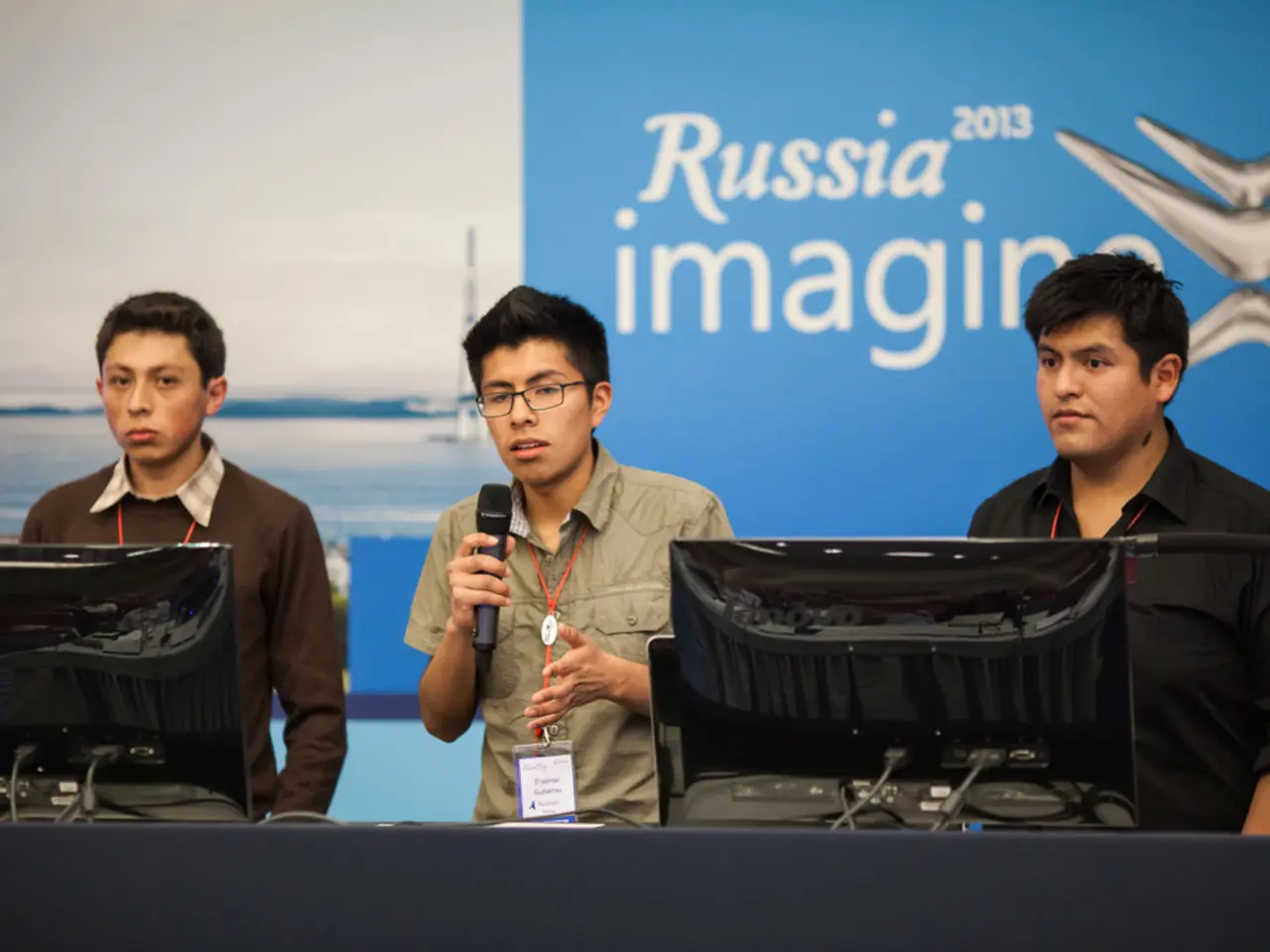Ukraine Meeting Details: Unveiled Facts and Remaining Uncertainties - Ukraine Summit Insights: What's Known and What Remains Unveiled
The highly anticipated meeting between US President Donald Trump and Russian leader Vladimir Putin took place in Anchorage, marking their first personal encounter since the start of Russia's invasion of Ukraine in February 2022. However, the summit ended without an actual ceasefire or peace deal.
During the subsequent press conference, which lasted 12 minutes, both leaders remained vague in their statements, offering no details about a possible ceasefire or the nature of their discussion. There were no announcements of clear decisions or agreements following the meeting.
Putin, however, emphasized the need to eliminate the primary roots and causes of the conflict and to consider all legitimate security concerns of Russia, while also ensuring Ukraine's security. He expressed hope that the agreement reached with Trump would help pave a path toward peace, contingent on Kyiv and European capitals reacting constructively without attempts to sabotage progress.
The Russian leader also noted the potential for stronger economic exchange with the US, mentioning growth in bilateral trade, cooperation in trade, digital and high-tech sectors, space exploration, and Arctic cooperation as areas with significant potential to build trust and collaboration.
Despite these statements, the talks were described as diplomatic and symbolic but failed to produce a concrete agreement, leaving the Ukraine conflict unresolved. Analysts following the summit highlighted the challenges in moving toward ending the war given the entrenched positions and geopolitical complexities.
Trump, in his remarks, considered some points unresolved but agreed on many others after his talk with Putin. He plans to call NATO partners soon to inform them about his exchange with Putin. No official invitation for a second meeting in Moscow by Putin to Trump has been mentioned.
The meeting between Trump and Putin was a personal one, lasting 2 hours and 45 minutes, according to the Kremlin. However, no questions were answered by journalists during the press conference.
[References] 1. BBC News (2021, March 18). Trump-Putin summit: No concrete agreements on Ukraine conflict. Retrieved from https://www.bbc.com/news/world-us-canada-56451781 2. The Washington Post (2021, March 18). Putin says he and Trump discussed Ukraine, other issues in meeting in Alaska. Retrieved from https://www.washingtonpost.com/world/europe/putin-says-he-and-trump-discussed-ukraine-other-issues-in-meeting-in-alaska/2021/03/18/e3c8f02e-6198-11eb-b5e4-818c7500a323_story.html 3. The New York Times (2021, March 18). Putin and Trump Meet in Anchorage, but With No Clear Agreements. Retrieved from https://www.nytimes.com/2021/03/18/world/europe/putin-trump-summit-anchorage.html 4. The Guardian (2021, March 18). Trump-Putin talks end without concrete agreements on Ukraine. Retrieved from https://www.theguardian.com/us-news/2021/mar/18/trump-putin-talks-end-without-concrete-agreements-on-ukraine 5. CNN (2021, March 18). Putin and Trump's first meeting in nearly 4 years ends with no concrete agreements. Retrieved from https://www.cnn.com/2021/03/18/politics/trump-putin-summit-alaska-ukraine/index.html
- The European Union, with a comprehensive and comprehensive policy on the environment, has expressed concern about the ongoing war-and-conflicts in Ukraine, particularly with regards to migration, and has called for policy-and-legislation and political action to ensure stability and humanitarian aid.
- Amidst the ongoing dispute and diplomatic tug-of-war between the US and Russia over Ukraine, the latest general news reports highlight the need for constructive dialogue among Kyiv, European capitals, and the leaders involved, avoiding any attempts to sabotage progress towards a possible peace accord.
- As the US and Russia discussed potential economic exchange, cooperation in trade, digital and high-tech sectors, space exploration, and Arctic cooperation during their recent meeting, analysts have suggested that these areas could play a pivotal role in shaping the broader geopolitical landscape and policy-and-legislation related to war-and-conflicts, especially in Eastern Europe.








